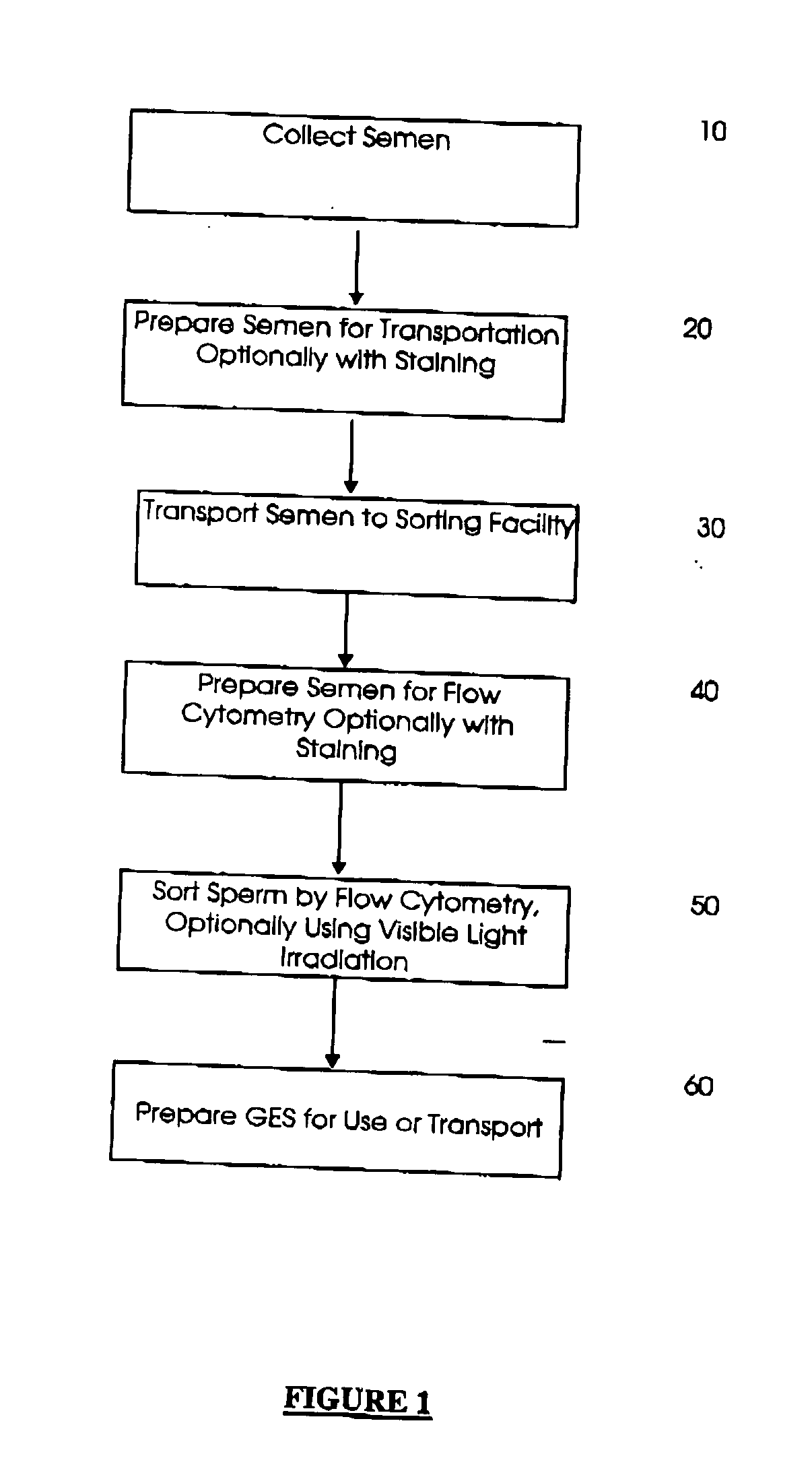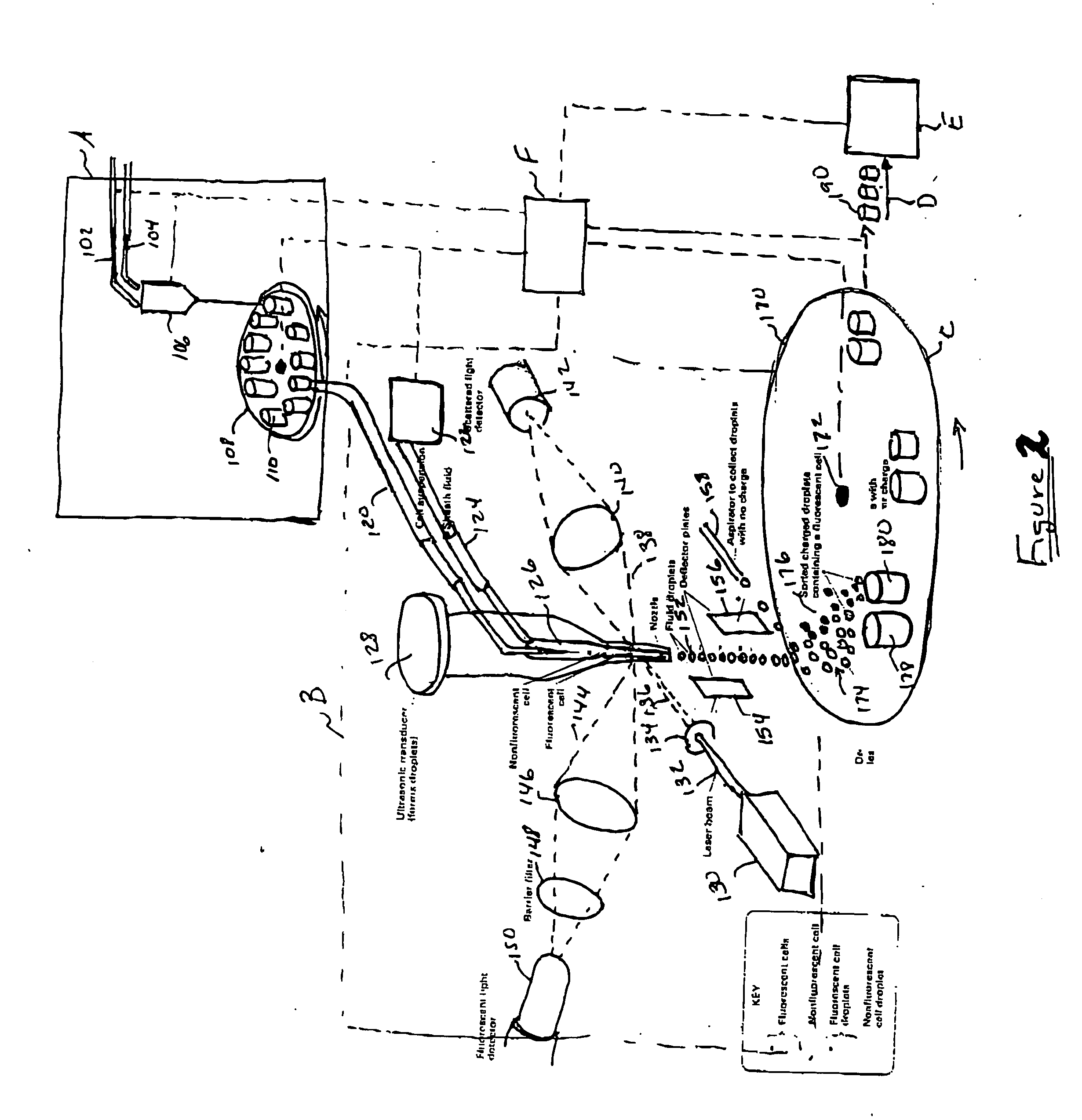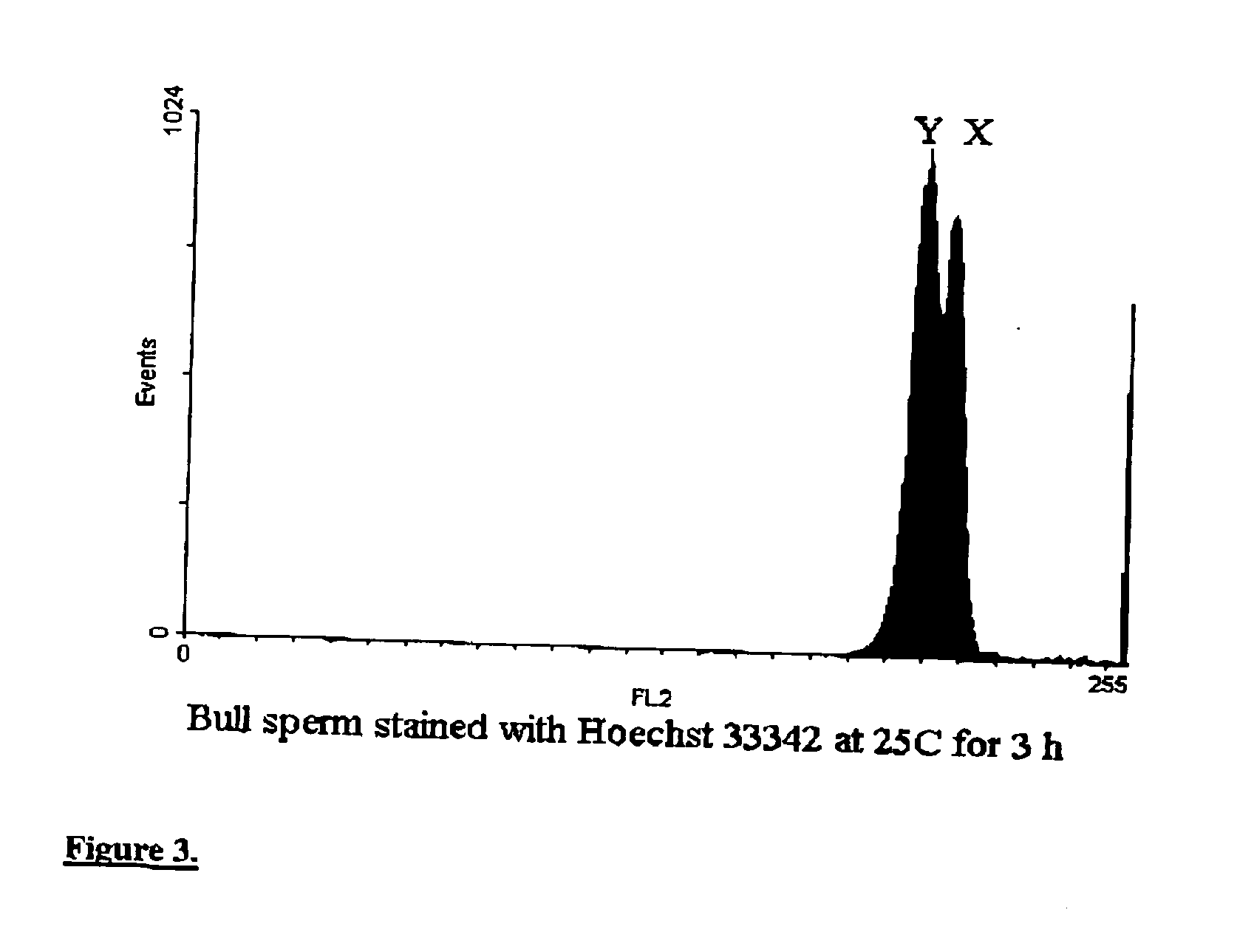Methods and apparatus for producing gender enriched sperm
a technology of sperm and enriched sperm, applied in the field of methods, can solve the problems of ineffectiveness, ineffectiveness, and inability to enter permeabilized or dead cells, and achieve the effects of reducing the cost of flow cytometry equipment, high viability and separation efficiency, and reducing damage to the sperm
- Summary
- Abstract
- Description
- Claims
- Application Information
AI Technical Summary
Benefits of technology
Problems solved by technology
Method used
Image
Examples
example 1
Bisbenzimide-BODIPY Conjugate
[0040] A bisbenzimide-BODIPY conjugate was prepared using commercially available starting materials as follows:
a. Preparation of 9-[5-[5-(4-methyl-piperazinyl)-2-benzimidazolyl]-2-benzimidazolyl]phenoxy)octan-1-oic acid, istrifluoroacetic acid salt—see structure 1 below
[0041] Under a nitrogen atmosphere, 660 μL of a hexanes solution of lithium-t-butoxide (1.0M) was added to a solution of 70.4 mg of p-[5-[5-(4methyl-1-piperazinyl)-2-benzimidazolyl)-2-benzimidazolyl]-trihydrochloride phenol (commercially available as Hoechst 33258) in 2.5 mL of anhydrous DMSO. 8-Bromooctan-1-oic acid (30.4 mg) was then added and the mixture stirred at room temperature for 18 hours. Reverse phase HPLC purification of the reaction mixture utilizing 0.1% trifluoroacetic acid in the mobile phase yielded 20.8 mng of 1 (17%).
[0042] Mass spectra: M+H+=567 m / z.
b. Preparation of N-(3-aminopropyl)-8-(p-[5-[5-(4-methyl-1-piperazinyl)-2-benzimidazolyl-2-benzimidazolyl]phenoxy)oct...
example 2
Low Temperature Staining of Bull Sperm with Hoechst H33342 Followed by X,Y-Sorting
[0070] Bull sperm in citrate buffer at pH 6.9-7.0 is sent from collection facility to sorter facility by same-day delivery at 18° C. Upon receipt the sperm is divided into three portions and stored and stained overnight with Hoechst 33342 dye at 18° C., 20° C., or 22° C. (all in citrate buffer at pH 6.9). Each is checked at O hours (after overnight staining) for separation into X- and Y-sperm by flow cytometry, then the temperature is allowed to rise to 24° C. to enhance uptake. At 1.5 and 5 hours, the samples are checked again for separation into X- and Y-bearing sperm. The results are shown in the following Table 2.
TABLE 2Results of staining bull sperm overnight with Hoechst 33342 (HO) at18° C., 20° C. or 22° C. evaluated for separation of Y- and X-bearingsperm by flow cytometry after warming to room temperaturefor various periods of time0 hr1.5 hr5.0 hrincubation @incubation @incubation @Treatmen...
example 3
Low Temperature Staining of Bull Sperm with Hoechst H33342 Followed by X,Y-Sorting
[0072] Bull semen was collected from a sexually mature bull using an artificial vagina and the sample was diluted with citrate buffer (pH 7.0) at 1 part semen: 3 parts buffer. The sample was transferred to the flow cytometry laboratory at 18° C. The concentration of the sample is determined using a hemocytometer and the cells were diluted with an appropriate amount of TEST buffer (pH 7.35) to obtain 100 million sperm per mL. Ten microliters of a stock concentration (5 mg / ml in dH2O) of Hoechst 33342 was added to the sample of sperm and the cells were incubated at 25° C. for up to 4 hours. A second population of cells was handled in like manner but was incubated at 35° C. for 1 hour to serve as a positive control. A third population of cells was handled in like manner but the buffer pH is 7.2 instead of pH 7.35 to determine if buffer pH influences uptake of Hoechst 33342. At one-hour intervals for up t...
PUM
| Property | Measurement | Unit |
|---|---|---|
| temperature | aaaaa | aaaaa |
| temperature | aaaaa | aaaaa |
| temperature | aaaaa | aaaaa |
Abstract
Description
Claims
Application Information
 Login to View More
Login to View More - R&D
- Intellectual Property
- Life Sciences
- Materials
- Tech Scout
- Unparalleled Data Quality
- Higher Quality Content
- 60% Fewer Hallucinations
Browse by: Latest US Patents, China's latest patents, Technical Efficacy Thesaurus, Application Domain, Technology Topic, Popular Technical Reports.
© 2025 PatSnap. All rights reserved.Legal|Privacy policy|Modern Slavery Act Transparency Statement|Sitemap|About US| Contact US: help@patsnap.com



